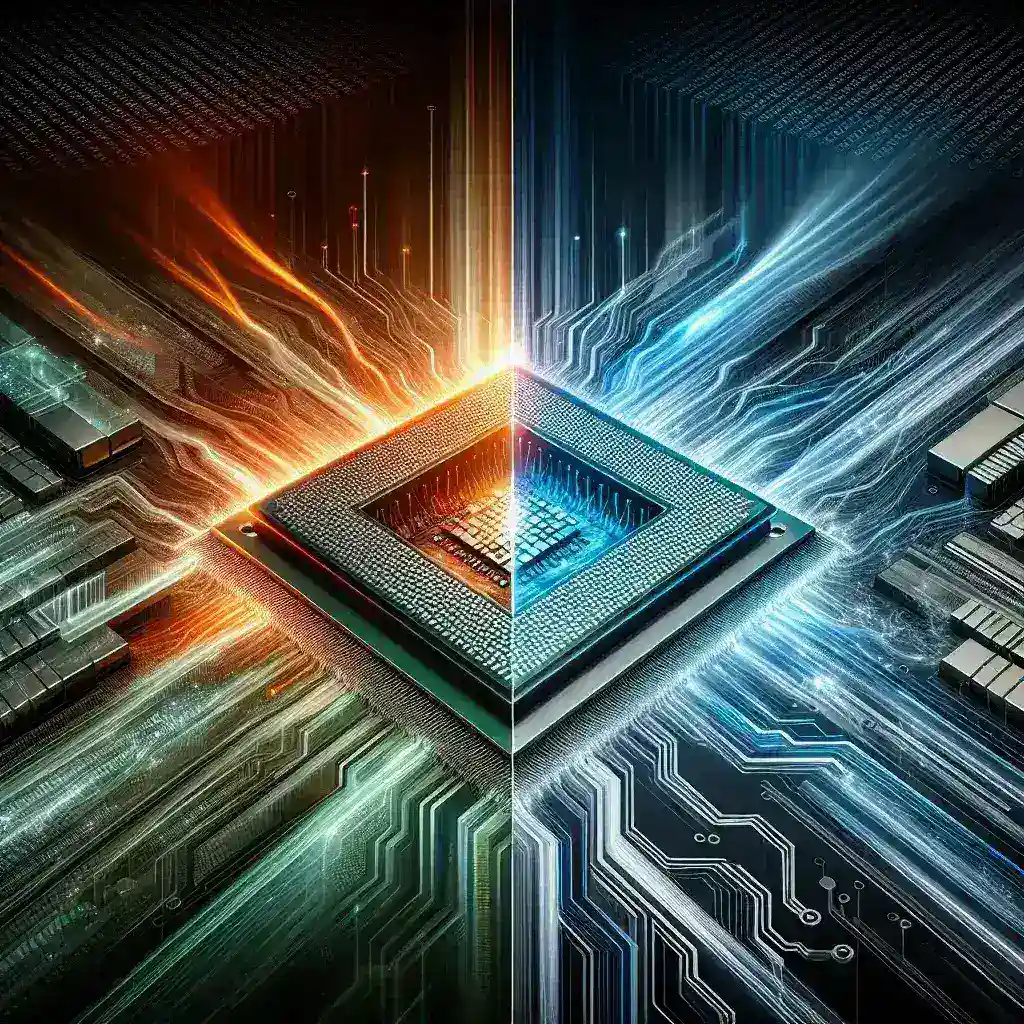Introduction
The ongoing rivalry between AMD and Intel has shaped the computing world for decades. As we step into 2024, the debate continues to evolve with both companies releasing new and improved models. This article aims to dissect the performance characteristics of both AMD and Intel processors to help you make an informed decision.
Architecture and Technology
Both AMD and Intel have made significant strides in architectural improvements. AMD’s Zen 4 architecture and Intel’s Alder Lake lineup have redefined performance benchmarks.
AMD Zen 4
AMD’s Zen 4 architecture focuses on increasing IPC (Instructions Per Clock) and energy efficiency. Built on a 5nm process, Zen 4 offers higher densities and reduced power consumption.
Intel Alder Lake
Intel’s Alder Lake series utilizes a hybrid architecture combining high-performance cores (P-cores) and high-efficiency cores (E-cores). This design aims to optimize multitasking and workload distribution.
Performance Benchmarks
Performance benchmarks provide a quantifiable comparison between AMD and Intel’s offerings.
Single-Core Performance
Intel continues to lead in single-core performance, which is crucial for tasks that depend on high clock speeds like gaming and certain productivity applications.
Multi-Core Performance
AMD has a slight edge in multi-core performance due to its higher core counts, making it ideal for multi-threaded applications such as video editing and 3D rendering.
Power Efficiency
Power efficiency has become a crucial factor, especially for portable devices like laptops.
AMD
Thanks to the 5nm process, AMD’s Zen 4 processors consume less power, making them better suited for energy-conscious setups.
Intel
Intel’s hybrid architecture also offers competitive power efficiency, although it slightly lags behind AMD in this category.
Pricing and Value for Money
Cost is a significant consideration for many consumers when choosing a processor.
Generally, AMD processors offer better value for money, providing high performance at a relatively lower price point. Intel, on the other hand, tends to be more expensive but offers superior single-core performance, which may justify the cost for certain users.
Real-World Performance
Real-world performance often diverges from benchmark results, as it takes into account user experience and application-specific gains.
Gaming
For gamers, Intel’s single-core advantage translates to slightly better performance in many titles, although the difference is increasingly marginal as more games optimize for multi-core processing.
Productivity
Professionals involved in video editing, software development, and other multi-threaded tasks may find AMD’s multi-core advantage more beneficial.
Final Thoughts
The battle between AMD and Intel in 2024 is more balanced than ever. AMD holds the upper hand in multi-core performance and power efficiency, making it a fantastic choice for professional workloads and energy-conscious users. Intel, with its strong single-core performance and hybrid architecture, remains the go-to for gaming and tasks that benefit from high clock speeds. Ultimately, the choice between AMD and Intel will depend on your specific needs and budget.

